
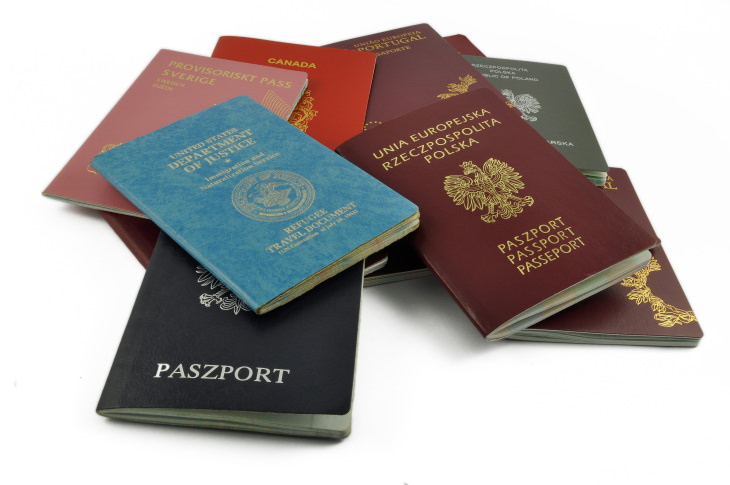

As for blue passports, these are quite common, with 81 countries having them. These are mainly countries from the Caribbean and the Americas, such as Canada, Jamaica, and Barbados. Australia, Ukraine, Hong Kong, and India, too, issue blue passports. The United States has a blue passport as well, with the color of the travel document corresponding to the blue in the American flag, but it wasn’t always like that. In fact, before 1976, American passports were issued in various shades of red, green, and even beige at different time periods.
Related Article: The Bizarre Origins of Some Very Familiar Flags
To view all the passport colors in the world, you can visit this website: Passport Index. There, you can categorize passports by color and also search for specific countries in the search field on this website.
As you can probably tell, most countries feature dark colors, and there are a few reasons for that, too. On one hand, darker passports won’t look dirty with use and they look more official than bright colors. On the other hand, though, dark colors make the country’s insignia, commonly printed in silver or gold, stand out better and be more legible. In fact, China reportedly chose the black cover color solely for aesthetic purposes.
Lastly, diplomatic travel documents often feature a different color than regular passports. Chinese diplomatic passports are red, for example, because diplomats are believed to be representatives of the communist party. Likewise, organizations like the Interpol have their own passport color - black, whereas UN passports are always blue.
Who knew passport cover colors meant so much?!
Share this article with family and friends!

You Live and You Learn - 16 Useful Charts and Info
Learn something useful and interesting today!

Download These Essential Travel Apps Before Your Next Trip
These apps are essential for travel in 2024.

The Surprising Reasons the Color of Your Eyes Can Change
In the rare occurrence your eyes change color significantly throughout adulthood, there are several common causes that are important to be aware of.
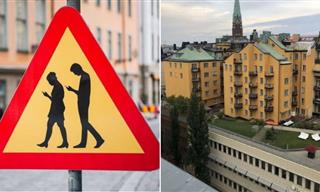
14 Photos That Describe What It’s Like to Live in Sweden
Sweden is such a cool and unique country! See what's it's like to live or visit this country in this collection of fun photos!

The Secret Meaning Behind Bread Packaging Twist Ties
Did you know that the color of twist ties on bread packaging changes from loaf to loaf? This trick will help you pick the freshest bread at the store.
 5:12
5:12
Why Does Paris Have So Many FAKE Buildings?
As you stroll through the streets of Paris, you'll find quite a large amount of fake doors and façades, but why?

Looking for a Dreamy Valentine Holiday? 10 Stunning Spots
Looking for a romantic destination to head to with your significant other? Head to one of these places.
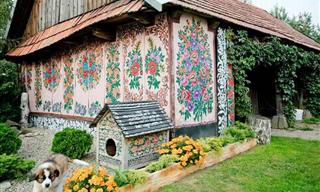
Zalipie: The Beautifully Painted Village of Flowers
The small village of Zalipie can be found at a remote area of South Poland. But to those who make the effort to get there the trip is well worth it, because this village contains quite the surprise between its walls...
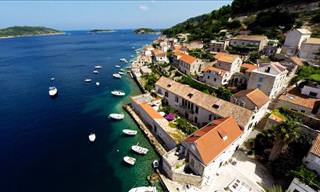
12 Amazing Croatian Islands That Beg to Be Visited
Discover 12 beautiful islands in Croatia that have what every tourist wants from a vacation.
 2:33
2:33
This Video of the Norwegian Fjords Will Leave You In Awe
This stunning time-lapse video will take you over three of Norway's mightiest fjords. What's more, it's in full HD!

These are the Top 11 Areas to Visit in Switzerland
Here are recommendations for the most beautiful and pastoral areas in the country that you should definitely visit.

An Ancient Underground City Reveals Its Secrets
Is this the world's most ancient underground city?

15 Summer-Time Festivals to Make You Merry
We are blessed enough to live in a world full of beautiful events and festivals. We've taken the liberty of compiling a definitive list of them for you.
 13:26
13:26
These Ancient Roman Buildings Amaze Architects to This Day
Here are 10 of the greatest Ancient Roman building projects that still stand tall and amaze us to this day!

INTERACTIVE: 16 Gorgeous Places to See in Canada!
With this interactive map, you will be able to travel to some of the most beautiful places in a land already inundated with so many.

10 Must-See Sights in the Moroccan City of Marrakesh
To have a perfect vacation in Marrakesh, the following ten places are highly recommended.

10 Stunning Wonders You Need to See Before They Disappear
The Earth is full of amazing places and wonderful species, but soon enough, we may not get the chance to see them ever again.
 5:59
5:59
This Gorgeous Village Lies Hidden Within the Mountains
The village of Hallstatt looks as if it came straight out of a fairy tale, surrounded by beautiful nature and exuding tranquility for everyone who visits. Come see how it looks up close.

9 Magical Scottish Towns We'd Love to Visit
If you are planning a trip to Scotland, here are 9 highly recommended towns to exploreץ

I've Never Seen Gardens as Beautiful as the Japanese Ones
These Japanese gardens will leave you just wishing for a calm walk in such a beautiful place.
 17:05
17:05
NYC to Singapore: Inside the WORLD'S LONGEST FLIGHT
Would you dare spend a whopping eighteen non-stop hours on a plane?
 7:58
7:58
Majestic Austria: A Tour of Grand Churches & Cathedrals
Austria is home to some of the most beautiful and art-filled churches you’ll ever see.

This Exotic Coast Must Be Seen to Appreciate Its Beauty
This place puts other tropical paradises to shame.

What Beauty! This European Country Has So Much to Offer
8 spectacular places that will probably make you pack your bags and plan your next vacation!

Welcome to One of the Most Beautiful French Cities...
Prepare to immerse yourself in all that Montpellier has to offer - discover what sights are truly worth seeing and experiences worth having.

What's the Dirtiest Place on the Plane?
If you were asked what the dirtiest place on the plane was, what would you answer? The next study is going to surprise you and change your mind about dirty places.

Touch Down in These Incredible Island Airports!
Here are some of the most fantastic island airports that you could be landing in on your next exotic vacation!

You Won't Believe That These Train Routes Actually Exist!
While most train journeys around the world are typically boring and uneventful, these terrifying ones more than make up for them!
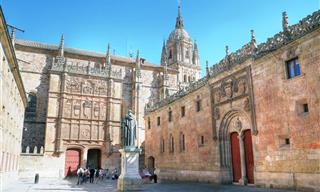
The Incredible Sights and Sites of Salamanca, Spain!
Looking at the most interesting and beautiful parts of Salamanca, Spain

Life in Turkey’s Istanbul is Pretty Special – 15 Pictures
Istanbul in Turkey is a city of many wonderful contrasts as you will see in these striking pictures.
 8:23
8:23
The Magical Beauty of Grindelwald, Switzerland
Almost everything people look for in Switzerland can be found in the enchanting town of Grindelwald.

Fall in Love With This Gorgeous Romanian City
Come see the sights of Cluj-Napoca, the second biggest city in Romania and a place of gorgeous sites.
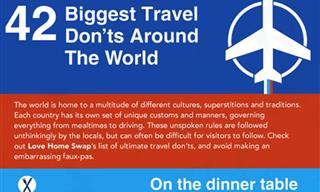
Learn 42 Different Politeness Rules From Around the World!
Here's everything you need to know about the various principles of politeness that exist in different countries. It's both fascinating and a handy travel tool!

Las Vegas Isn't Just About Gambling as These Places Prove
Planning a visit to Las Vegas? If so, you must really visit these stunning places.

These Monasteries Are Hard to Get To, But It's Worth It...
It's not easy to get to these beautiful monasteries, but it's worth it...

14 Romanian Towns that’ll Make Your Vacation Unforgettable
There are countless reasons to visit Romania, but few people go outside central cities to discover the beauty and charm that is hidden in its small towns...

10 Beautiful Landscapes that Make Austria a Traveler's Gem
10 incredible photos that will make you want to book your next flight to Austria.

Explore the World from Above with These 16 Photos
These aerial shots by award-winning photographer Cédric Houmadi offer a stunning new perspective of our world.

Stunning Mountain Views Everyone Must See But Few Can
Reaching the peaks of these 10 mountain trails is only for experienced hikers, though we all can appreciate their beauty!

Panama is a Tourism Destination to Match Any Other...
Panama isn't often thought of as a go-to tourist destination, but this post will change your opinion entirely. Here 10 must-visit places in Panama.
 14:30
14:30
Surprising Facts to Know About the Aztecs and Their Empire
The Aztecs were way ahead of their time!
 4:20
4:20
Admire the Mystical Streams and Moors of Czechia in 4K
Fly above Šumava National Park, a part of the ancient Bohemian Forest in the Czech Republic full of beauty, mystery, and charm!

Fairytale Netherlands: 16 Pictures Too Pretty to Be Real
These gorgeous photos celebrate the beauty of the Netherlands.
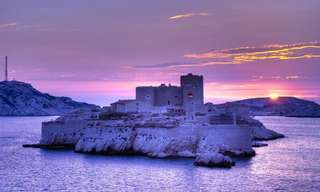
Château d'If: One The Most Infamous Prisons In History
The famous Château d'If began as a formidable fortress, built as a defensive post in 1524 on the small island of If...
 7:31
7:31
Step Inside This Incredible ROTATING HOUSE
Step inside the world’s ‘most famous’ rotating house in San Diego.

14 Unforgettable Places One Should Visit in the UK
If all you know about England is London, these 14 incredible locations will surprise you, and possibly awaken your wanderlust...

Only in China - A Collection of 16 Fascinating Images
China is such a unique and fascinating place!


